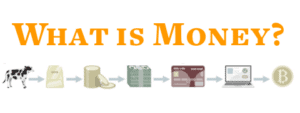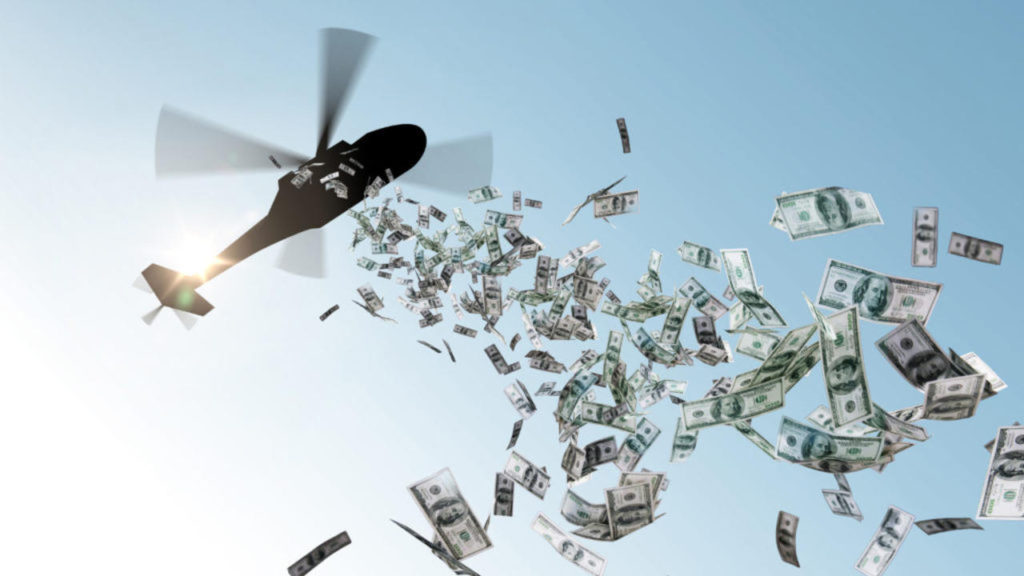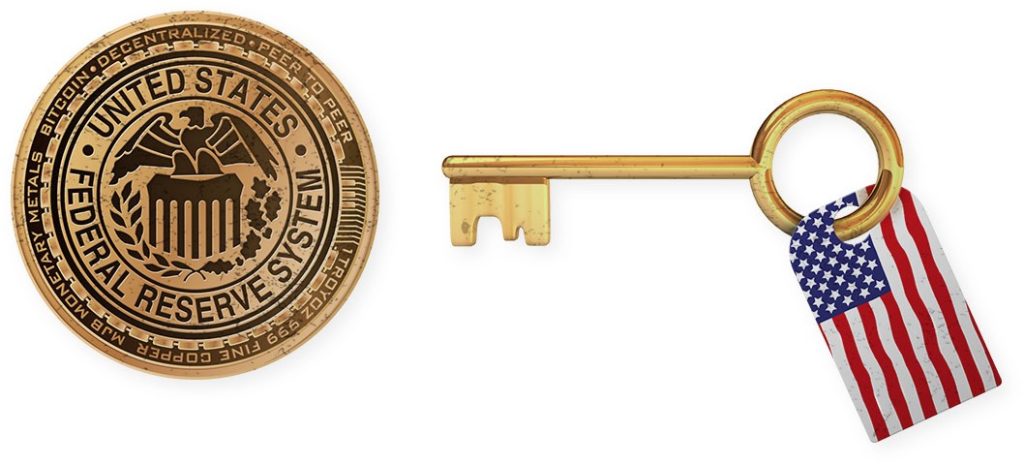At first glance, the concept of a CBDC (Central Bank Digital Currency) or digital dollar seems strange. How would a CBDC be any different from the online bank accounts we use today? How is it different from other digital currencies like Facebook’s upcoming Libra, the Chinese DCEP digital yuan, or Bitcoin? In this explainer, I will dive into what a CBDC is, whether the US needs to build one, and what it could mean for Americans.
In the wake of the COVID-19 stimulus plans, a pressing question emerged: how can the government deliver all this newly ‘printed’ cash to the people who need it? Not all Americans give the IRS their banking information, and mailing checks is slow. That’s why a draft of one COVID-19 stimulus plan included a call to create a ‘digital dollar’ – it could offer a faster way to deliver stimulus.
What is a CBDC?
A Central Bank Digital Currency (CBDC) is a digital currency supplied and managed by a central bank. To you and I, this probably wouldn’t operate much different from our bank accounts today, aside from maybe faster transactions since no clearing house is needed. However, this misses the point of a CBDC. To understand, we need to talk about your bank account. Did you know your bank account is actually just a debt that your bank owes you? In financial parlance your account is known as a commercial bank liability.
Your bank in turn holds some amount of central bank liabilities in an account they have at the US central bank – the Federal Reserve or ‘Fed’. These might be actual dollar bills or just numbers in a digital ledger – yes, confusing, I know. When you withdraw from an ATM, your bank is repaying you some of the debt they owe you by giving you US dollars, a central bank liability. When you hold US dollars, the Federal reserve owes you. The trick is, they never pay you back! You used to be able to redeem those dollars for actual gold – but now, those dollars are fiat money, and don’t represent anything.
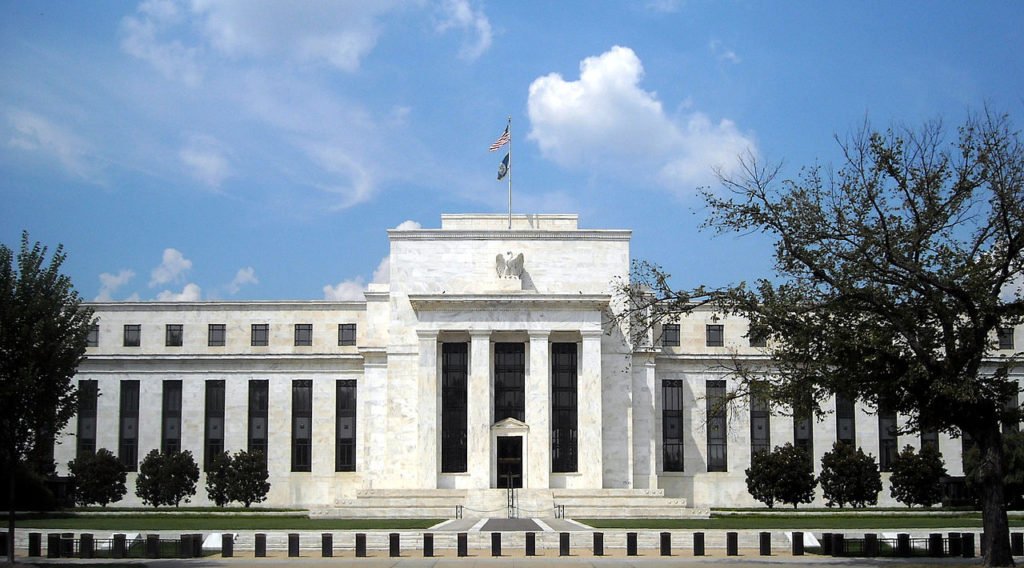
A digital dollar system is different from today’s system because it would allow anyone to have an account at the Federal Reserve bank. This account would hold central bank liabilities directly, in digital form. Central bank liabilities are typically considered lower risk than commercial bank liabilities because the commercial bank is a middleman that could go bankrupt.
Doesn’t sound like much of a change from what we have today, right? We will get into the differences below. First, I’ll explain why the US is even considering a digital dollar.
Does the US need a CBDC?
There are three main reasons that Congress and other US governmental bodies are exploring a digital dollar:
- Improve payments
- Ensure the dollar’s international power
- Expand monetary policy tools
Improve payments
Today’s methods for moving money are slow and cumbersome. Bank transfers can take several days, leading to late fees and headaches. Banks are closed on weekends, making it difficult to deposit physical checks or even move digital money on your own schedule.
Many of these problems boil down to the fact that there are several different banks where people keep their money, each with their own database, so transfers between banks must be reconciled. This takes time and involves risk, even when transactions are purely digital.
When you move money from one bank to another in the US, you are almost always using the “Automated Clearing House” (ACH) network to do so. ACH involves using intermediaries to reconcile accounting books across banks to ensure the money actually moves – it is debited from one account and credited to another. However, if you are simply transferring money from one account to another account at the same bank, the process is often instantaneous.

A digital dollar system would give everyone an account at the Federal Reserve, on one shared database. As a result, transfers between accounts could be handled nearly instantaneously.
Ensure the dollar’s international power
As a world reserve currency, the dollar is demanded all around the world. Most of the world’s oil is sold for US dollars, and since most countries need to import oil, those countries and companies need to buy and hold US dollars. Many countries also borrow US dollars from financial institutions so they can take on infrastructure projects – like roads, schools, and financial centers of their own. They must pay back this debt in US dollars, which creates more demand for dollars internationally. Many foreign central banks also hold US dollars in order to back the strength of their own currencies. The citizens of some nations, like Cambodia, commonly use US dollars as their local currency.
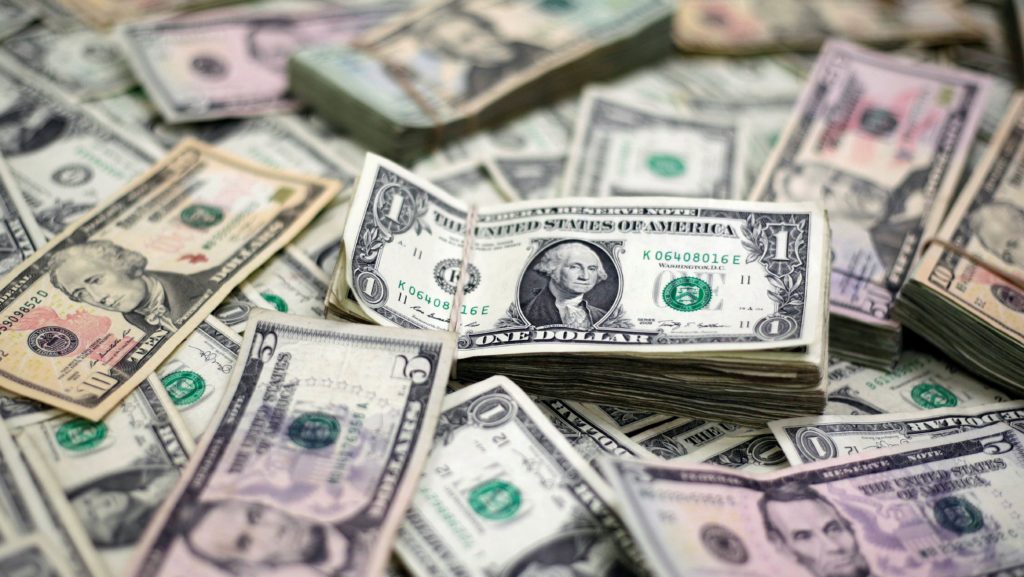
This constant demand for the US dollar gives the United States a lot of power, because it allows the US government to run larger deficits by selling US government debt to the Federal Reserve in exchange for newly printed dollars. Since there is high demand for dollars, this increased supply of dollars is absorbed without the value of the dollar depreciating much as a result.
However, the US dollar faces challenges, and two powers are showing how a digital currency could disrupt the standing of the dollar.
China and the Digital Yuan
By digitizing their currency, China could make the yuan far more accessible to nations and individuals who want to use the yuan instead of their local currency. This increased convenience, combined with the recent withdrawals of the US from the world stage, could cause governments and people to ditch dollars and start using yuan to finance infrastructure projects and conduct trade. China is already testing a digital yuan, known as the Digital Currency Electronic Payment or ‘DCEP’, in four cities as of late April 2020.
Facebook and the Libra Digital Currency
Facebook made waves with their proposal for a digital currency supported by a basket of currencies and assets. Called Libra, this currency would have instant reach to billions of people – about 30% of the world’s population – through Facebook’s products.
The announcement of Libra immediately caught the attention of the US government, which attempted to stop Facebook from commencing development on the project. As a result of this pressure, Facebook revised their plan for Libra and now intend to operate more similarly to Venmo, Paypal, and other payments apps.
Expand monetary policy tools
Monetary policy is how central banks try to regulate spending in an economy to ensure growth without high inflation. Over the past 20 years, we have seen traditional tools like setting interest rates and quantitative easing start to wane in their ability to stimulate spending during rough times, so the Federal Reserve may use a digital dollar to expand their ability to implement new monetary policy tools. The Fed can only execute monetary policy through the banks who have accounts at the Fed, but through a digital dollar, the Fed would be able to execute monetary policy tools directly on consumer bank accounts.
Before we get in to what new tools the Fed might use, let’s go over their primary tools as of late April 2020.
- Setting interest rates through open market operations: The Federal Reserve affects the rate at which borrowers can get loans by buying and selling government debt from banks, which manipulates the amount of credit available in the economy. So far, the Fed has never gone to “negative rates” by charging commercial banks for holding excess reserves at the Fed, but other major central banks like the Bank of Japan and European Central Bank have.
- Buying non-governmental assets through quantitative easing (‘QE’): The Federal Reserve sometimes buys assets like mortgage-backed securities and corporate debt to “bail out” failed financial institutions and corporations. This tool was created during the 2008 financial crisis, when putting interest rates to 0% was not enough to bail out the failing financial sector.
- Delivering money directly to American citizens through helicopter money: The Federal Reserve prints new money and works with the Treasury department to distribute it to consumers through checks and direct deposit. At the onset of the coronavirus-sparked financial crisis, The Fed put interest rates to 0% and launched a huge QE program, but neither of these measures helped the vast number of ordinary Americans who were out of work. Helicopter money was the next option. Interestingly, many financial luminaries such as Ray Dalio predicted this next evolution of monetary policy years ago, long prior to the COVID-19 crisis.
A ‘digital dollar’ maintained by the Federal Reserve would give the Fed even more power to control and direct consumer spending and stimulus money. Some possibilities include:
- Deliver stimulus payments to Americans immediately, without relying on the Treasury or traditional banking system, and finely control how that money is spent.
- Enact negative interest rates on the bank accounts of regular Americans, meaning the account balance would drop at a steady rate over time – making the account holder more likely to spend or invest that cash.
- Instantly debit accounts for taxation, government fines, or civil forfeiture (seizing cash when someone is suspected of criminal activity).
- Build a social credit score by monitoring spending – those who spend money in ways the government believes are helping to drive economic growth could be given better access to and rates on loans.
What would a digital dollar mean for me?
A digital dollar system would likely mean slightly increased convenience for Americans to make payments and receive ‘helicopter money’ stimulus. This system would also likely allow the currently ‘unbanked’ who are unable to access banking services to receive the benefits of digital banking. However, the system does not come without downsides – having all consumer accounts at the Federal Reserve could mean increased surveillance and direct control over the bank accounts of all Americans.
The Upsides: Better Bank Transfers and Remittances
While Venmo, Apple Pay, credit cards and other payment technologies make it very convenient for Americans to pay people and businesses today, major bottlenecks in our systems include bank transfers and remittances. The “automated clearing house” or ACH bank transfer system can take 3 days or more to move money from bank to bank.
With all consumer accounts at the Fed under a digital dollar system, transfers could be made in minutes instead of days. Sending money back to family members abroad, a payment type known as remittances, is also a costly and slow system through intermediaries like Western Union. A digital dollar could potentially make this transfer much faster and cheaper, if both parties are able to have an account at the Federal Reserve.
The Downsides: Increased Government Controls
On the negative side, the government may use a digital dollar system to regulate behavior and induce consumer spending in pursuit of economic growth. While these efforts are often well-intentioned, centralized control of potions of economic activity often leads to further problems, which then justify further government intervention.
To understand how a digital dollar system could be used to control the finances of regular Americans, we can look at several real examples. Many are from China, which already has pervasive digital payments infrastructure through WeChat and AliPay. Others, like negative interest rates, are already in place in Europe and Japan.
Instantaneous fines
The government could use access to your bank account at the Fed to instantaneously debit your account for any criminal infraction. In Shenzhen, a high-tech city of millions in China, this system is already in place. Here’s one man’s story of how facial recognition cameras saw him jaywalking and debited his account through WeChat Pay.
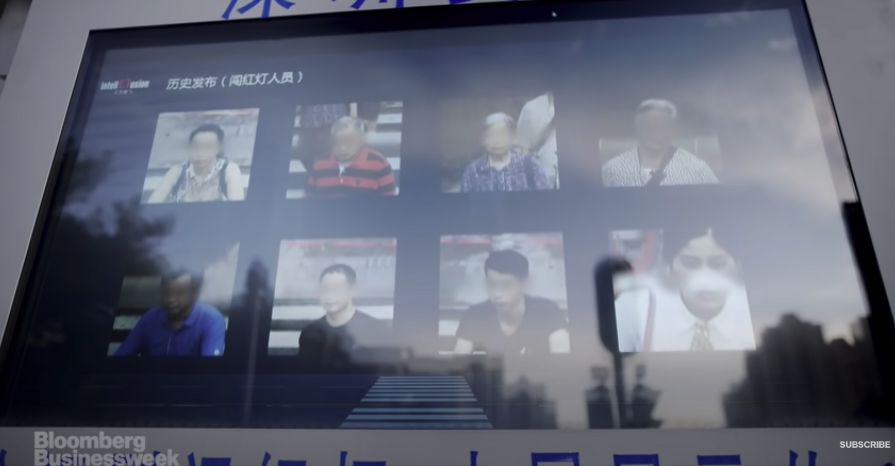
Social credit systems
Through access to your bank accounts and payment system, the government could incentivize certain activities and punish others using your finances. In China, being a ‘good citizen’ grants discounts on bike rentals, for instance. For people who lower their score by buying videogames or alcohol, jaywalking, or ‘spreading rumors’ about the Chinese Communist Party, penalties can include blocking plane ticket purchases, access to loans, and even employment. Here’s a look inside China’s new social credit system from NBC.
Negative interest rates
The Fed could use a digital dollar system to apply negative interest rates to your bank account, meaning dollars would be deducted from your account at a steady rate. You would be paying to have a bank account, essentially. Their motivation to do so would be to spur spending and investing by making it painful on the pocketbook to not do so.
As bizarre and unrealistic as negative interest rates sound, your bank account likely already has a negative real interest rate, because the interest rate your bank pays you to keep your money there (probably close to 0%) is below the inflation rate (reported at around 2% in the US). If you keep your money in a bank instead of spending or investing it, you are slowly losing value to inflation.
Central banks like the European Central Bank and Bank of Japan already have negative interest rates today, but they apply to commercial banks that have accounts at the central bank. This is part of the reason commercial banks no longer pay you any interest on your account balance – they are squeezed by low interest rates from the central bank.
With a digital dollar system, the bank accounts of everyday Americans would be at the Federal Reserve, so they could apply negative rates to those bank accounts. Economists are beginning to recommend that the US Federal Reserve set interest rates into negative territory.
Will a digital currency replace the US dollar?
Throughout recent history, monetary systems have changed significantly about every 50 years, with the last major change happening in 1971 with the end of the international gold standard.
The current US dollar system could be replaced by a similar digital system with new capabilities for convenient payments, stimulus delivery, government surveillance and spending controls. The Treasury Department, for one, seems to be considering this a very real possibility. In April 2020, Treasury Secretary Steven Mnuchin designated Brian Brooks, the former Chief Legal Officer at major cryptocurrency exchange Coinbase, as the second in command at the US Office of the Comptroller of the Currency. Brooks is an advocate of digitizing the dollar, although as he wrote in Fortune Magazine he believes that private corporations should develop the technology.
The US dollar system could also be replaced from outside the US by competing international currencies like the Chinese DCEP digital yuan or non-governmental currencies like Bitcoin operated freely by individuals.
If you like my work, please share it with your friends and family. My goal is to provide everyone a window into economics and how it affects their lives.
Subscribe to email updates when new posts are published.
All content on WhatIsMoney.info is published in accordance with our Editorial Policy.
